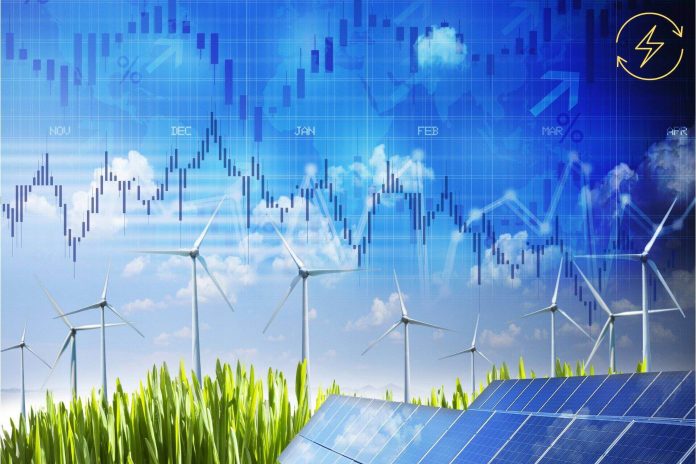Owing to the abundant production of hydroelectric power plants, Croatia was able to export energy in February. It is expected that due to the melting of large quantities of snow which fell last month, in March and April rivers will receive large quantities of water indicating thereby the successful continuation of the production of our hydroelectric power plants in the next two months.
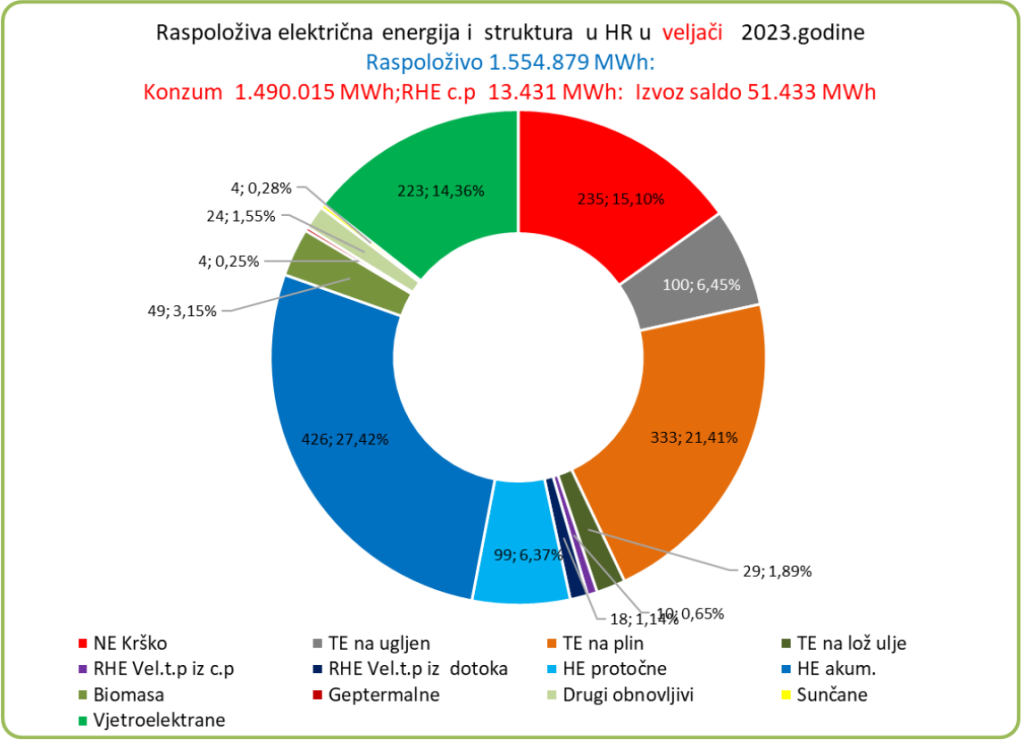
In the overall available energy in February, hydroelectric power plants participated with 35.58 percent, wind farms with 14.36 percent, the nuclear energy power plant Krško with 15.10 percent, and the other renewable energy sources with 5.23 percent. In the overall energy structure in Croatia in February, fossil energy sources accounted for 29.75 percent.

Last month also saw great variations in the daily consumption and peak load due to climate conditions in the course of the month. Owing to the lower air temperature of 0.25C in relation to the usual one, the consumption of electric power was higher by 6 GWh in February in comparison to the previous month. The maximum power meter consumption amounted to 4.332 MWh/h and was reached on 6 February at 11 am. The maximum meter transit amounted to 1.518 MWh/h and was reached on February 5 at 12 o’clock.
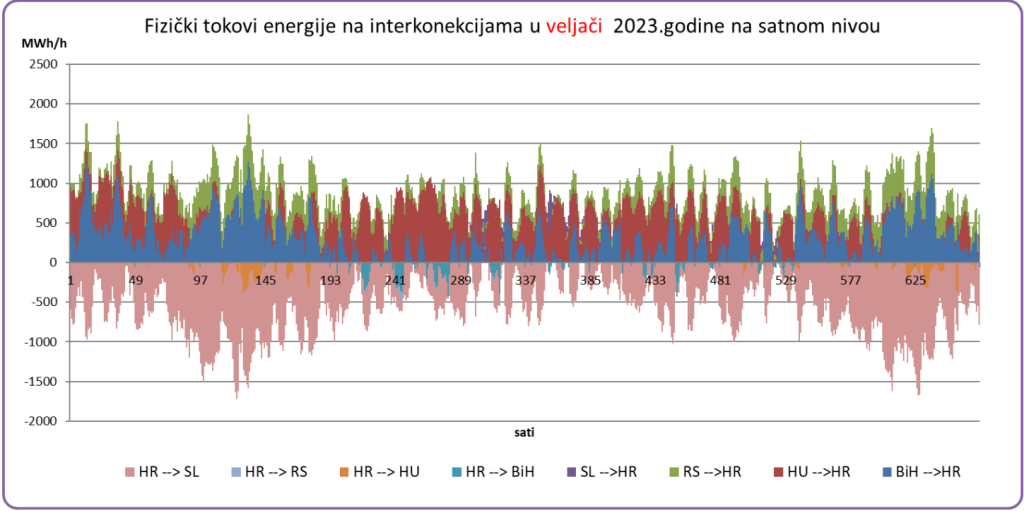
Apart from that, the considerable physical transit of electric power through the high voltage HOPS grip toward the neighboring regulatory areas was also achieved, on average about 452 MWh/h which caused increased losses in Croatia’s transmission grid.
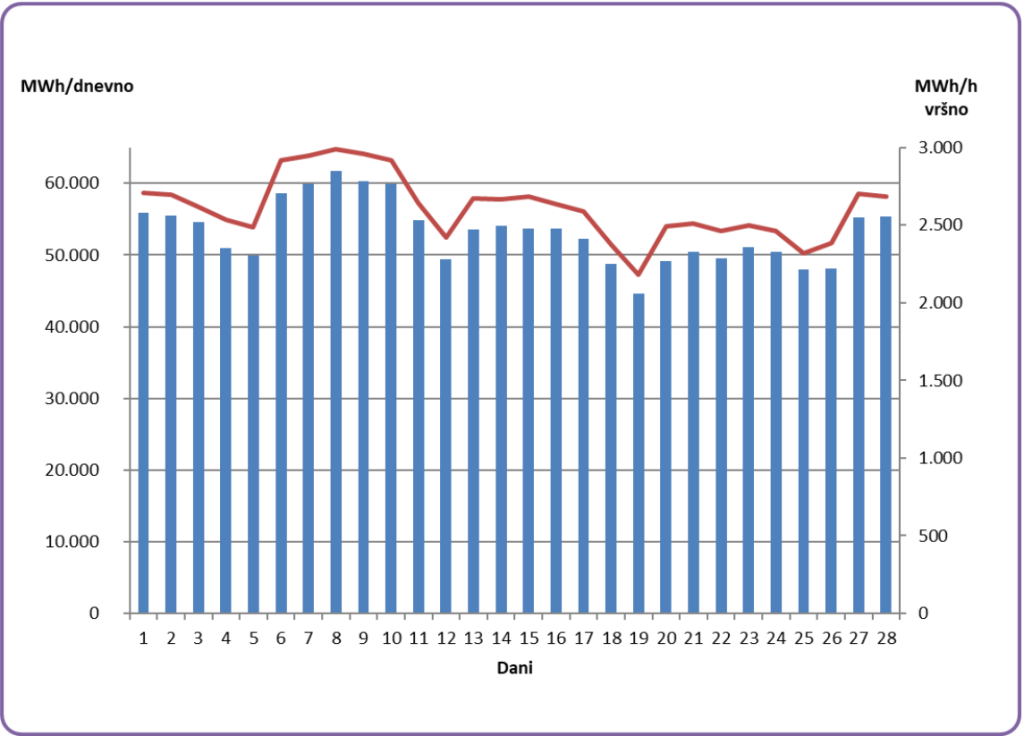
When the daily consumption and peak load are viewed in February, the variability of consumption is apparent due to changes in the air temperatures and heating needs. Therefore, the maximum daily consumer consumption amounted to 61.663 MWh/h and was registered on February 8th, while the maximum daily peak load amounted to 2.988 MWh/h and was registered on February 8 at 8 pm. The minimal daily consumer consumption of 44.612 MWh/h was registered on February 19. The minimal daily load was registered on February 20 at 4AM and amounted to 1.424 MWH/h.
Windfarm production in February 2023
The overall production of windfarms in February amounted to 223.288 MWh, and the power usability factor was 33.4%.
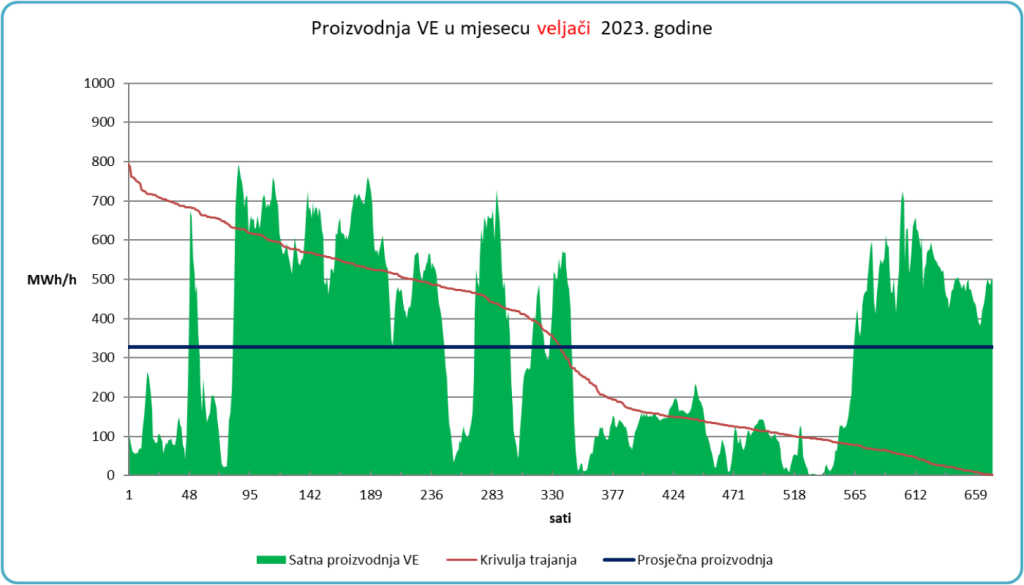
The average production of wind farms in February was 332.3 MWh/h, while the maximum production reached 793 MWh/h with the maximum power factor being 80.8 percent.
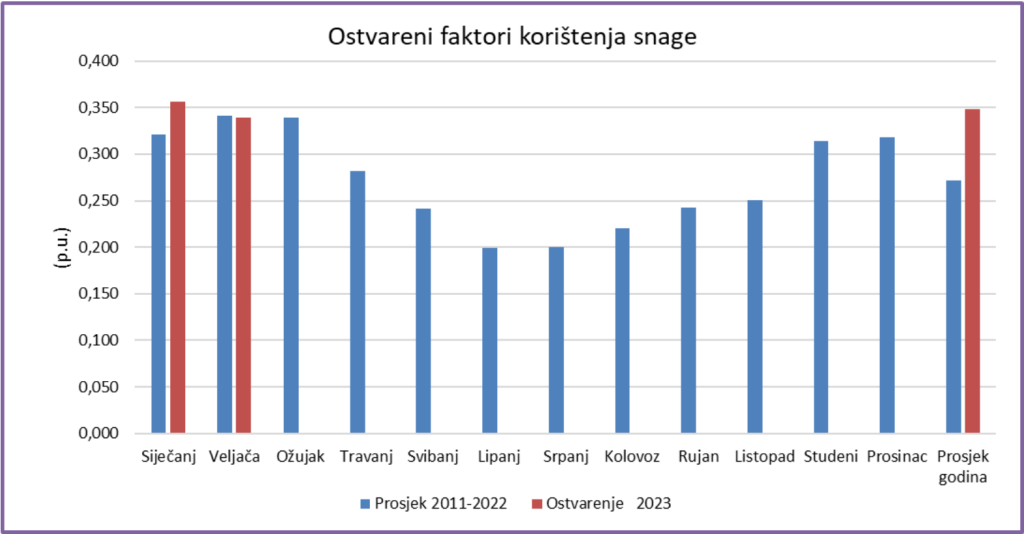
The maximum hourly change in windfarm production in February of this year “upward” amounted to 224 MWh/h, and “downwards” to 153 MWh/h.
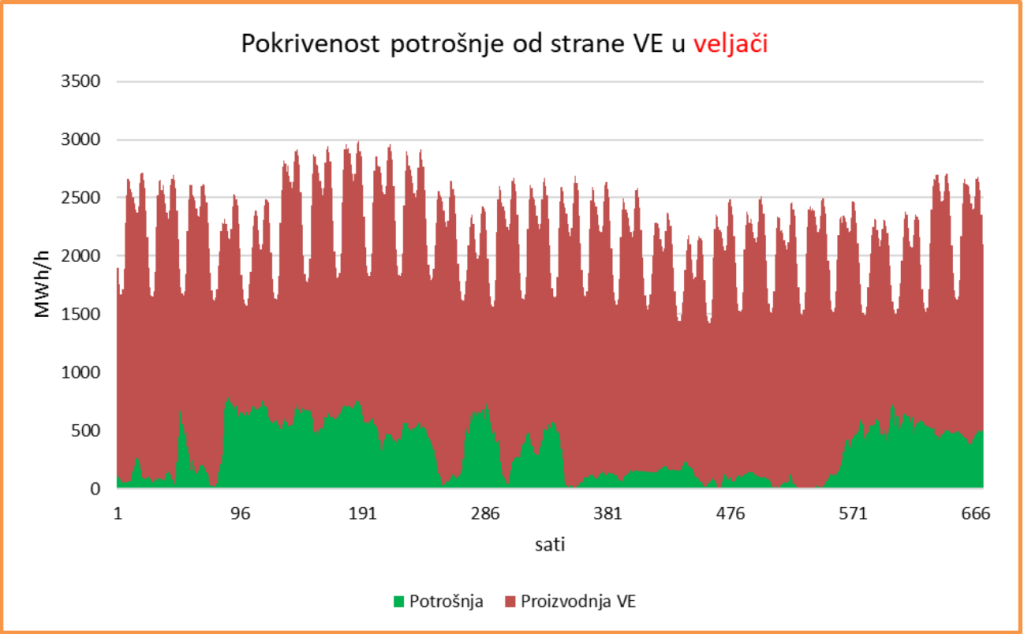
The maximum coverage of consumption from wind farms on an hourly basis amounted to 45.4 percent.
The price of electric power in February
The average hourly price in February of this year amounted to 145.60€ and was lower by 49.70€/MWh, which is a decrease of 25.4 percent in comparison to February last year. The average hourly prices for the first two months of this year amounted to 146.08€/MWh and was lower by 55.23€/MWh,, namely 27 percent in comparison with the first two months of last year.
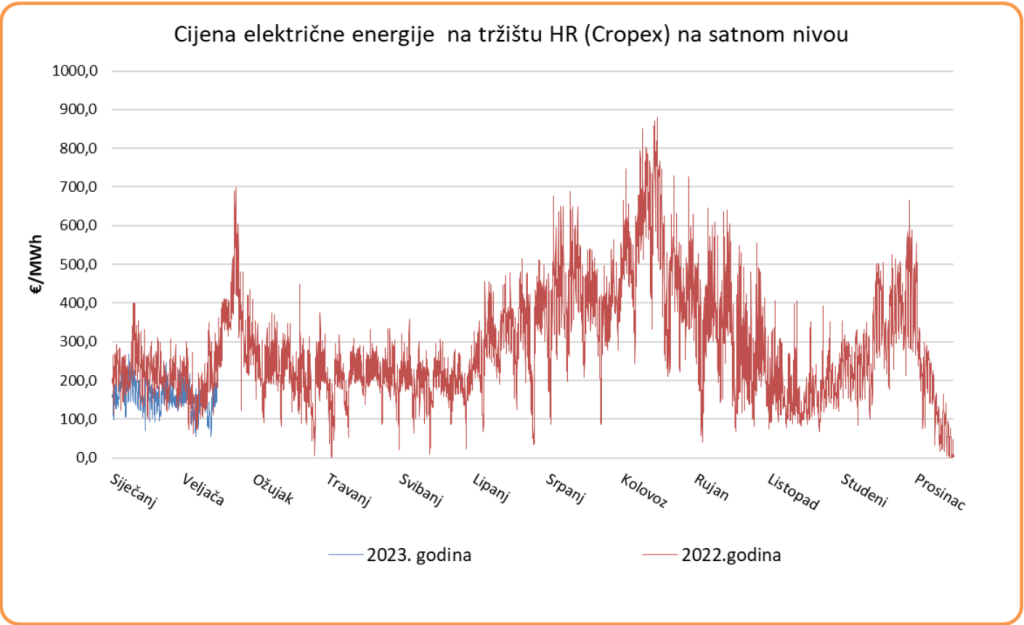
The structure of available energy in January and February 2023
In the first two months of 2023, Croatia had at its disposal 3.335 GWh of electric power and had no need to import it. The hydrological conditions in the first two months of this year were excellent so hydroelectric energy participated with almost 40 percent of the overall disposable energy in Croatia, while wind farms participated with 14.48 percent. In the first two months, wind farms produced almost the same quantity of energy as the nuclear power plant Krško.
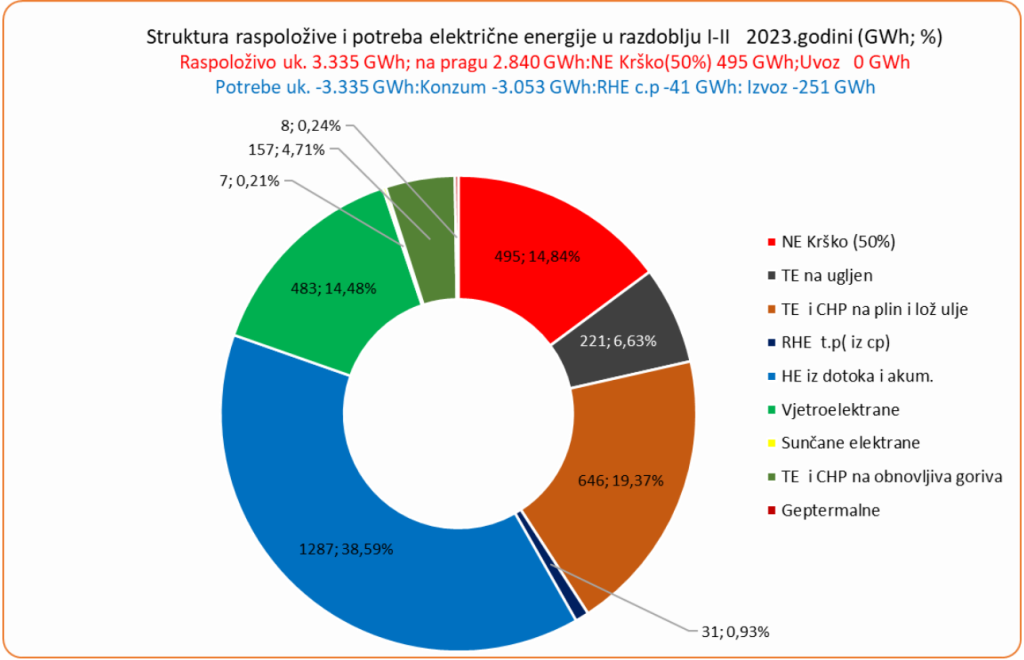
Share of renewable and fossil energy
The share of renewable energy in the energy mix of Croatia is slowly growing from year to year. Owing to hydroelectric power plants we obtain a significant percentage of electric power from renewable sources. They are followed by wind farms and biomass plants as significant producers of domestic renewable energy. According to the available data, in February renewable energy sources accounted for 55 percent of the overall available energy in Croatia, and in January as high as 61 percent.
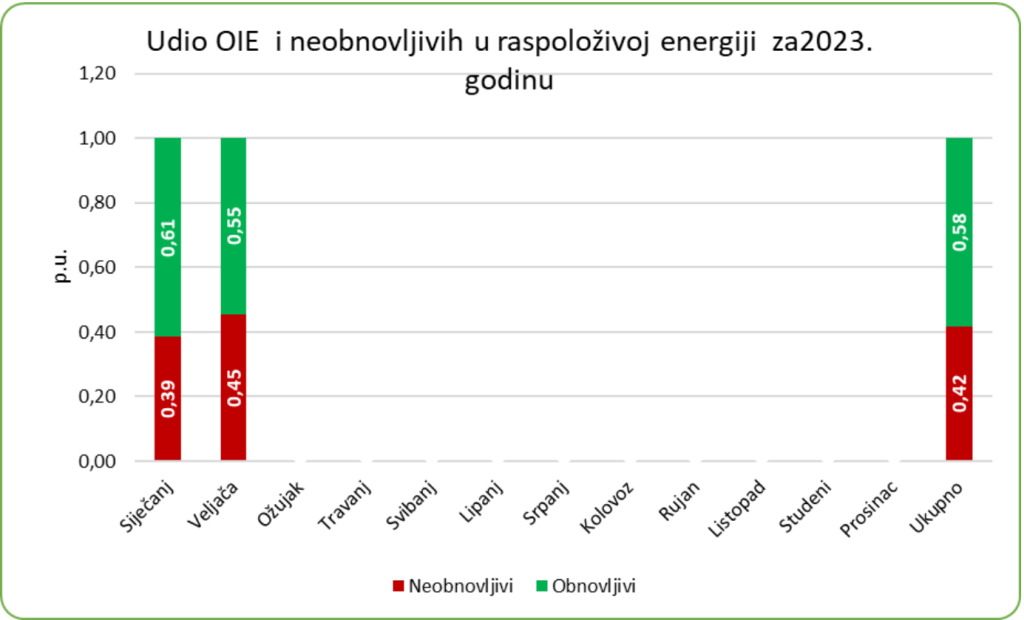
This overview of the basic characteristics of electric power and the electric power system in Croatia is the result of an analysis of publicly available data on the websites of HEP, HOPS, HROTE, CROPEX, NP Krško, ENTSO, DZS, RTE France, RED Electrica, World Data, IEA, EEX, EPEX. The overview was drawn up for RESC by Ing. Marko Lovrić.


